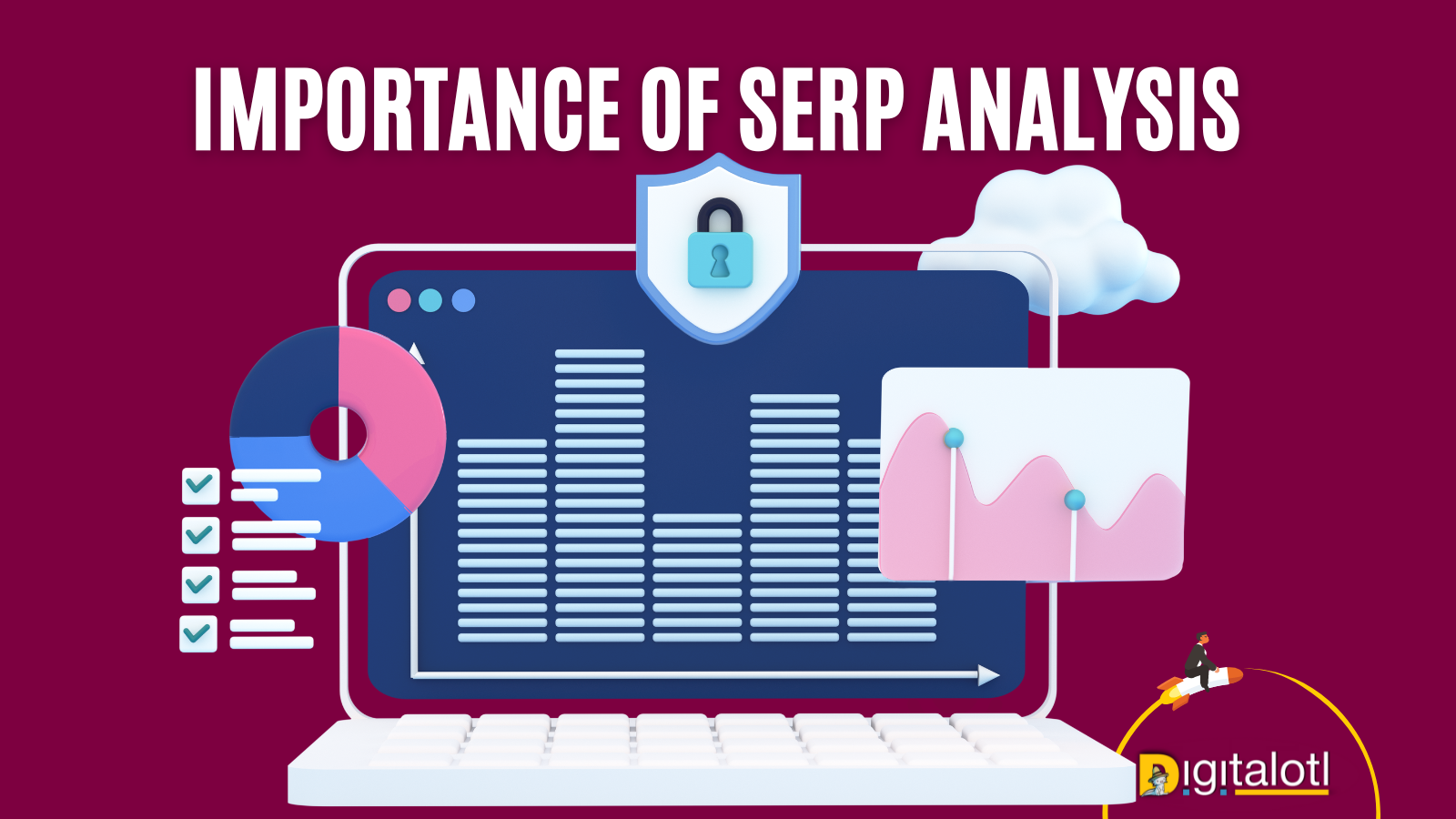If you’re aiming to dominate the Search Engine Results Pages (SERPs) and outperform your competitors, conducting a comprehensive SERP analysis is an indispensable step in your SEO strategy. Understanding what works for your competitors, identifying valuable keywords, and optimizing your content accordingly can significantly improve your search rankings. In this complete guide, we will delve into the world of SERP analysis, exploring its importance, methodologies, and the essential tools required to execute it effectively.
Table of contents
What is SERP Analysis?
SERP analysis involves scrutinizing the Search Engine Results Pages to gather insights about organic search results, paid advertisements, featured snippets, and related elements for specific keywords or topics. By evaluating SERPs, businesses can better understand how their target keywords perform, which competitors rank prominently, and what content Google considers relevant to users.
By analyzing the top-ranking websites for specific keywords and search queries, you can uncover the strategies that helped them achieve their high positions and assess how your content appears in search results. As mentioned earlier, modern search engine results pages (SERPs) display content in various ways, extending beyond traditional blue links.
Google has introduced several SERP features to present relevant information to search queries effectively.
Some of these features of SERP:
- Featured Snippets: Brief excerpts from webpages displayed at the top of the Google results page, providing quick answers to users’ questions without requiring them to click on any ranking links. Featured snippets can appear in various formats, including definitions, paragraphs, lists, “People Also Ask” dropdowns, steps, and tables.
- Knowledge Panels: Information boxes that appear when searching for people, places, organizations, or things. These panels automatically generate information from different sources and often include images, definitions, and relevant links. The content in knowledge panels is based on factual information determined by Google’s algorithm from reputable sources.
- Video Carousels: Scrolling lists of video results that mobile users can swipe through. Each option in the carousel is presented as a box containing a video thumbnail, title, uploader, and hosting site information.
- Maps: Automatically generated for location, business, or local SEO-related searches. Maps appear on the right side of desktop layouts or as the first feature on mobile devices, providing a map of the location or area, reviews, relevant links, and geographic information.
- Image Packs: Displayed when visual content is deemed the best way to address a search query. Image packs typically appear as a row at the top of the page or as a block among organic results, often linking to the Google Images tab.
Understanding and optimizing these SERP features can significantly impact your website’s visibility and click-through rates, ensuring that your content is effectively presented to users in various formats and layouts.
The Importance of SERP Analysis

Performing SERP analysis offers several invaluable benefits for your SEO efforts:
Keyword Research and Selection
SERP analysis helps you identify relevant keywords with high search volumes and low competition. By discovering these keywords, you can optimize your content to attract more organic traffic and potentially outrank your competitors.
Competitor Analysis
Understanding your competitors’ strategies is crucial for devising your own. Analyzing their content, backlinks, and SERP rankings can offer insights into their strengths and weaknesses, allowing you to fine-tune your SEO approach.
Content Optimization
SERP analysis reveals the type of content that Google considers valuable for a particular keyword. By aligning your content with user intent, you can create more relevant and engaging articles, thus increasing your chances of higher rankings.
Featured Snippet Opportunities
Identifying featured snippet opportunities can significantly boost your website’s visibility. SERP analysis allows you to understand the format and structure of featured snippets, enabling you to optimize your content for this coveted position.
Steps to Conduct a SERP Analysis
Define Your Target Keywords
Begin by selecting the keywords you want to analyze. Focus on those that are relevant to your business, have a substantial search volume, and are aligned with your content strategy.
Search and Analyze
Enter each target keyword into the search engine and study the SERPs that appear. Take note of the top-ranking pages, featured snippets, and paid advertisements.
Analyze Competitor Content
Visit the top-ranking pages and assess your competitors’ content. Look for aspects like word count, writing style, media usage, and information provided.
Identify Content Gaps
Based on your analysis, identify gaps in existing content. Determine what additional value you can provide to users through your content.
Optimize Your Content
Utilize the insights gained from SERP analysis to optimize your content. Make sure your article is more comprehensive, engaging, and informative than the current top-ranking pages.
The 5 Best SERP Tools Essential Tools for SERP Analysis

Google Keyword Planner
Google Keyword Planner is an indispensable tool for keyword research. It provides data on keyword search volume, competition, and related keywords, aiding you in making informed decisions about your target keywords.
SEMRush
SEMRush offers a suite of SEO tools, including SERP analysis features. It allows you to analyze competitor keywords, backlinks, and traffic sources, providing valuable insights to improve your own strategy.
Moz
Moz is renowned for providing one of the top SEO tools available, and their Moz Pro SERP Analysis Tool is particularly valuable for analyzing essential metrics, including:
- Potential: This metric assesses the potential value and impact of a particular keyword or webpage in terms of driving organic traffic and achieving higher search engine rankings.
- Opportunity: The Opportunity metric indicates the likelihood of successfully ranking for a specific keyword or webpage based on its competitiveness and the current search landscape.
- Domain Authority: This metric measures the overall strength and credibility of a domain in relation to other websites on the internet. A higher Domain Authority suggests a more authoritative and trustworthy website.
- Page Authority: Page Authority is a metric that evaluates the strength and influence of a specific webpage, indicating its potential to rank well in search results.
- Difficulty: The Difficulty metric gauges the level of competition and challenges associated with ranking for a particular keyword or topic. It helps identify keywords that may be easier or more challenging to target in your SEO efforts.
By leveraging the Moz Pro SERP Analysis Tool and analyzing these critical metrics, SEO professionals can make informed decisions to optimize their websites and content effectively, ultimately improving their search engine visibility and performance.
Ahrefs
Ahrefs is a powerful tool for backlink analysis, which is an essential aspect of SERP analysis. Understanding your competitors’ backlinks can help you build a robust backlink strategy for your own content.
AnswerThePublic
AnswerThePublic helps you discover relevant questions and topics that users are searching for, which can be valuable for creating content that aligns with user intent.
Conclusion
Performing a thorough SERP analysis is a critical component of a successful SEO strategy. It allows you to gain insights into keyword performance, competitor strategies, and content optimization opportunities. By utilizing the right tools and taking a strategic approach to SERP analysis, you can elevate your website’s rankings. As a result you can attract more organic traffic, and ultimately achieve your SEO goals. Remember, the world of SEO is dynamic, so continuously monitor and adapt your strategy to stay ahead in the ever-evolving digital landscape.
Frequently Asked Questions (FAQs)
Q1. What is SERP analysis, and why is it important for SEO?
SERP analysis involves studying the Search Engine Results Pages to gain insights into organic search results, competitor rankings, and valuable keywords. It is crucial for SEO because it helps businesses understand user intent, optimize content, and identify opportunities to outrank competitors.
Q2. How does SERP analysis aid in keyword research?
SERP analysis assists in keyword research by revealing high-volume, low-competition keywords. By identifying these keywords, businesses can optimize their content to attract more organic traffic and improve their search rankings.
Q3. What are the benefits of analyzing competitors through SERPs?
Analyzing competitors through SERPs allows businesses to understand their strategies, content approach, and strengths and weaknesses. This knowledge helps in devising a more effective SEO strategy and staying ahead in the competitive landscape.
Q4. How can SERP analysis be used for content optimization?
SERP analysis provides insights into the type of content that performs well for specific keywords. By aligning content with user intent and making it more comprehensive and engaging than existing top-ranking pages, businesses can optimize their content for better search rankings.
Q5. What are featured snippets, and how does SERP analysis help in securing them?
Featured snippets summarize answers that appear at the top of some search results. SERP analysis helps in identifying featured snippet opportunities. By understanding the format and content structure Google prefers, thus increasing the chances of securing this valuable position.

